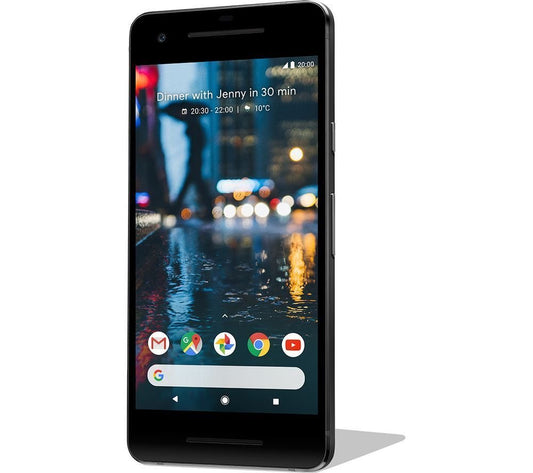In today's tech-driven world, knowing how to control your Android device is more important than ever. Whether you're a newbie or a seasoned user, mastering your device can make your life easier and more efficient. This article will guide you through the basics and advanced techniques of Android device control, offering tips and tricks to enhance your experience.
Key Takeaways
- Learn the essential settings and configurations to get the most out of your Android device.
- Discover advanced techniques to customize and automate your device for better control.
- Optimize your device's performance and battery life with smart management tips.
- Enhance your security and privacy settings to protect your personal information.
- Explore how to integrate and control smart home devices using your Android phone.
Understanding the Fundamentals of Device Control on Android
Mastering your Android device starts with understanding the basics. This section will guide you through the essential elements that form the foundation of effective device control.
Navigating the Interface
To use your Android device efficiently, you need to get comfortable with its interface. From the home screen to the app drawer, knowing where everything is will save you time. Touch controls and gestures like tapping, swiping, and pinching are key to interacting with your device. Learning these basic shortcuts can make your experience smoother.
Essential Settings and Configurations
Configuring your device settings is crucial for a personalized experience. Start with display settings to adjust brightness and screen timeout. Next, explore sound settings to choose ringtones and set volume levels. Finally, manage your connectivity settings to stay connected via Wi-Fi, Bluetooth, and mobile data.
Utilizing Built-in Tools
Android devices come with a variety of built-in tools designed to enhance your user experience. These tools can help you manage your device more effectively and unlock its full potential. From the settings menu, you can access features that allow you to monitor battery usage, manage apps, and even secure your device. Android is designed for users, providing visibility into the permissions requested by each app and control over those permissions.
Advanced Techniques for Enhanced Device Control
Customizing Quick Settings
Customizing quick settings allows you to access your most-used features with ease. By rearranging and adding shortcuts, you can make your device more efficient. Quick settings can be tailored to include options like Wi-Fi, Bluetooth, and screen brightness, making it simpler to manage your device's functions.
Automating Tasks with Routines
Automating tasks can save you time and effort. Using apps like Tasker or built-in features like Google Assistant Routines, you can set your device to perform actions automatically based on triggers. For example, you can create a routine to silence your phone at bedtime or turn on Wi-Fi when you arrive home.
Leveraging Developer Options
Developer options provide advanced settings that can enhance your device's performance and functionality. By enabling these options, you can access features like USB debugging, animation scaling, and background process limits. These settings are particularly useful for developers and advanced users who want to optimize their device's capabilities.
Exploring these advanced techniques can transform you from a casual user to a tech-savvy individual, capable of maximizing your device's potential.
Optimizing Performance and Battery Life
Managing Background Processes
Is your device running slow? Identify resource-intensive apps and close them. This can help speed up your phone. You can also use built-in tools to manage these apps.
Adjusting Power Settings
To save battery, adjust your power settings. Turn off features you don't need, like Bluetooth or Wi-Fi. You can also lower your screen brightness.
Utilizing Battery Saver Features
Enable battery saver mode to extend your phone's battery life. This mode limits background activities and reduces performance to save power. Adaptive Battery is another feature that learns your usage patterns and helps save battery.
By making these changes, you can drastically improve battery life and keep your device running smoothly.
Enhancing Security and Privacy
Configuring Security Settings
Safety is paramount when it comes to your Android device. Start by setting up biometric authentication, such as fingerprint or facial recognition, to add an extra layer of security. Biometric authentication acts as your digital identity guardian, ensuring only you can access your device. Additionally, create strong passwords and enable two-factor authentication (2FA) for added protection.
Managing App Permissions
Navigate through the intricacies of app permissions to ensure that only necessary access is granted. Review and manage app permissions regularly to limit the information apps can collect. This step is crucial in fortifying your device against potential privacy breaches.
Utilizing Privacy Features
Android offers various privacy features to help you maintain control over your data. Use features like app permissions, location controls, and data encryption to keep your information safe. Remember, a secure device is a happy device.
In the ever-evolving landscape of digital interactions, ensuring the security of your device is paramount. Let's embark on a comprehensive exploration of essential security measures, guiding you through the steps to fortify your digital haven.
Integrating Smart Home Devices with Android
Setting Up Smart Home Controls
Integrating smart home devices with your Android phone can greatly enhance your living experience. Using the Android Smart Home Control Panel, you can manage various devices from a single interface. This app allows you to control your smart home devices using a touchscreen interface, view their status, and create routines and scenes.
Using Voice Assistants for Device Control
Voice assistants like Google Assistant and Alexa make it easy to control your smart home devices. You can create groups to control multiple devices at once. For example, you can create a group called "Living Room" and add all the smart home devices in that room. Once the group is created, you can control all the devices with a single voice command.
Creating Automated Home Routines
Automated routines can simplify your daily tasks. For instance, you can set up a routine named "Movie Night" to turn on the TV, lower the blinds, and dim the lights with a single command. This not only saves time but also makes your home more efficient.
Setting up routines in the Alexa app involves a few simple steps: open the app, tap on "More," select "Routines," and follow the prompts to create your custom routine.
By mastering these features, you can unlock the potential of your smart home devices and make your life more convenient.
Troubleshooting Common Device Control Issues
Encountering issues with your Android device can be frustrating, but don't worry. This section will guide you through resolving common problems, ensuring your device runs smoothly.
Exploring Third-Party Apps for Device Control
Third-party apps can significantly enhance your control over Android devices. These apps offer a range of functionalities, from device management to task automation, making your Android experience more efficient and enjoyable.
Conclusion
Mastering device control on Android is not just about knowing the basics; it's about exploring the full potential of your device. By understanding essential settings, utilizing shortcuts, and exploring hidden features, you can transform your Android experience. Remember, the key to proficiency lies in continuous learning and experimentation. As you become more familiar with your device, you'll find new ways to make it work for you, enhancing both productivity and enjoyment. Stay curious, stay updated, and most importantly, enjoy the journey of mastering your Android device.
Frequently Asked Questions
How do I customize Quick Settings on my Android device?
To customize Quick Settings, swipe down from the top of your screen to open the Quick Settings panel. Tap the pencil icon or the 'Edit' option to add, remove, or rearrange the tiles according to your preferences.
What are some tips for saving battery life on my Android phone?
You can save battery life by lowering screen brightness, turning off Wi-Fi and Bluetooth when not in use, and enabling Battery Saver mode. Additionally, closing background apps and reducing screen timeout can help extend battery life.
How can I improve the security of my Android device?
Improve your device's security by setting a strong password or PIN, enabling two-factor authentication, and keeping your software up to date. Additionally, be cautious when downloading apps and only use trusted sources like the Google Play Store.
What are Developer Options, and how can I access them?
Developer Options provide advanced settings for developers and tech-savvy users. To access them, go to 'Settings,' then 'About phone,' and tap 'Build number' seven times. A message will appear confirming that Developer Options are enabled.
How do I set up smart home controls on my Android device?
To set up smart home controls, download the relevant smart home app from the Google Play Store. Follow the in-app instructions to connect your smart devices. You can then use your Android device to control lights, thermostats, and other smart home gadgets.
What should I do if my Android device is running slow?
If your device is running slow, try restarting it, clearing the cache, and uninstalling unused apps. Additionally, ensure your software is up to date and consider performing a factory reset if the problem persists.








